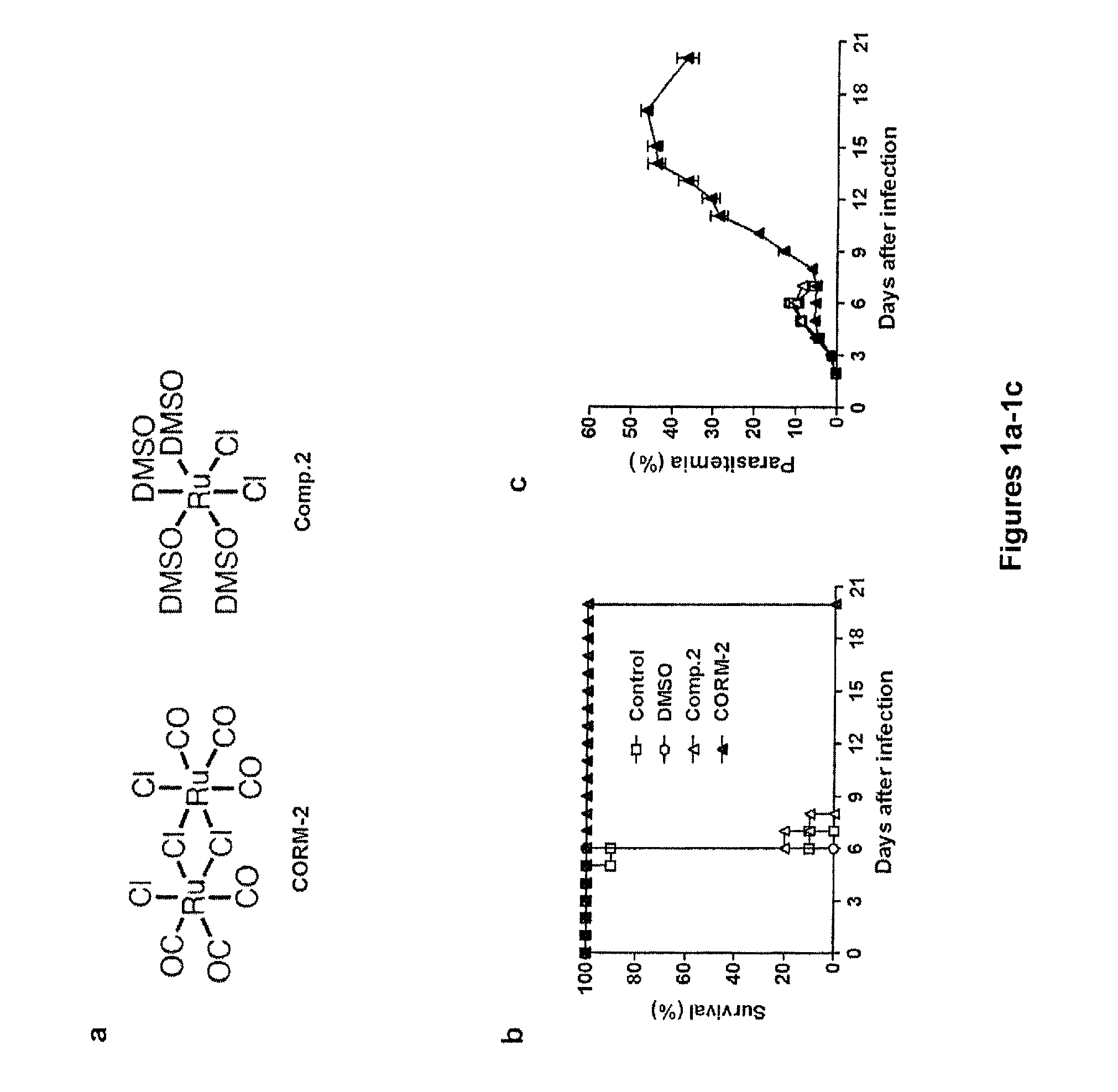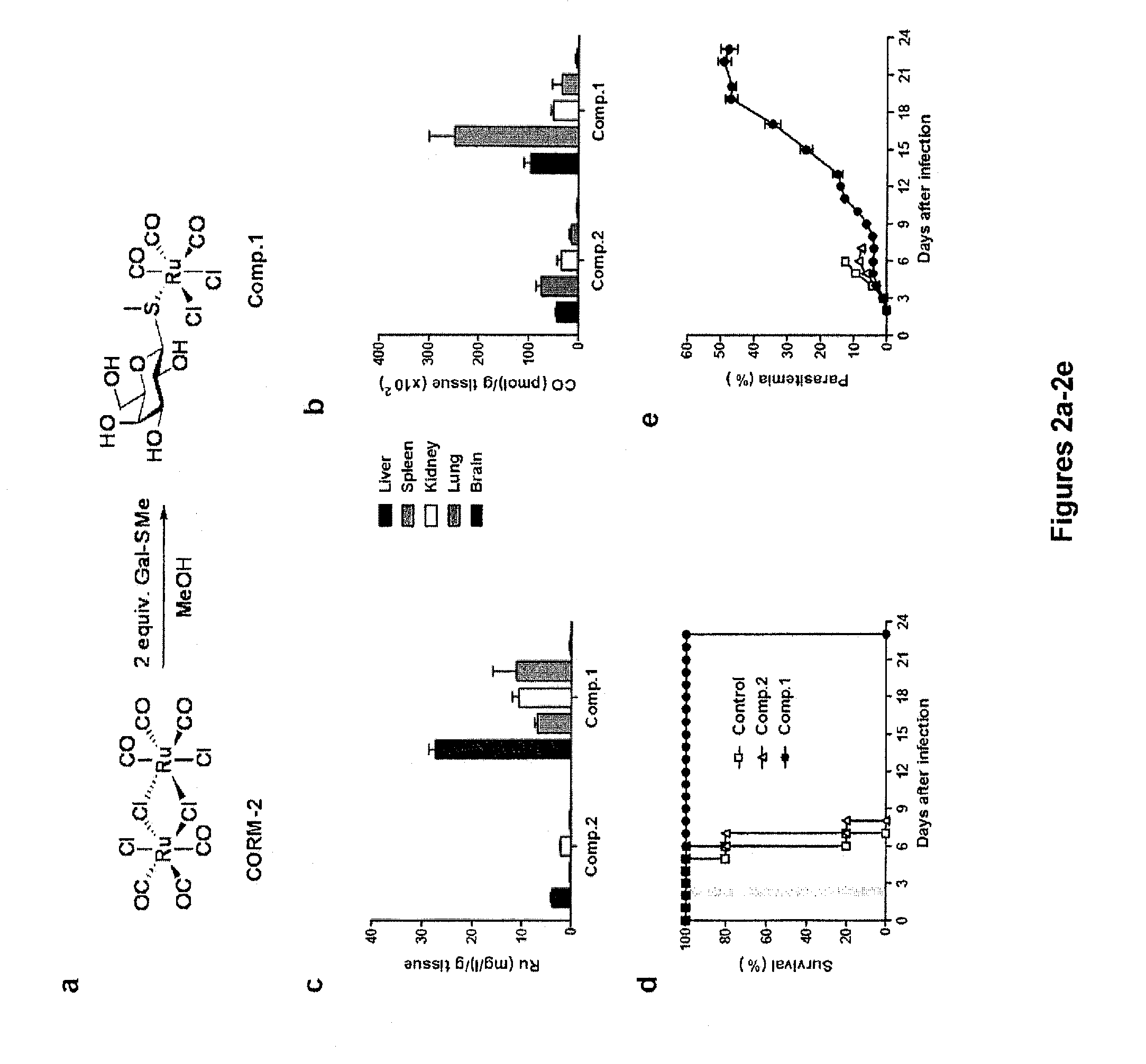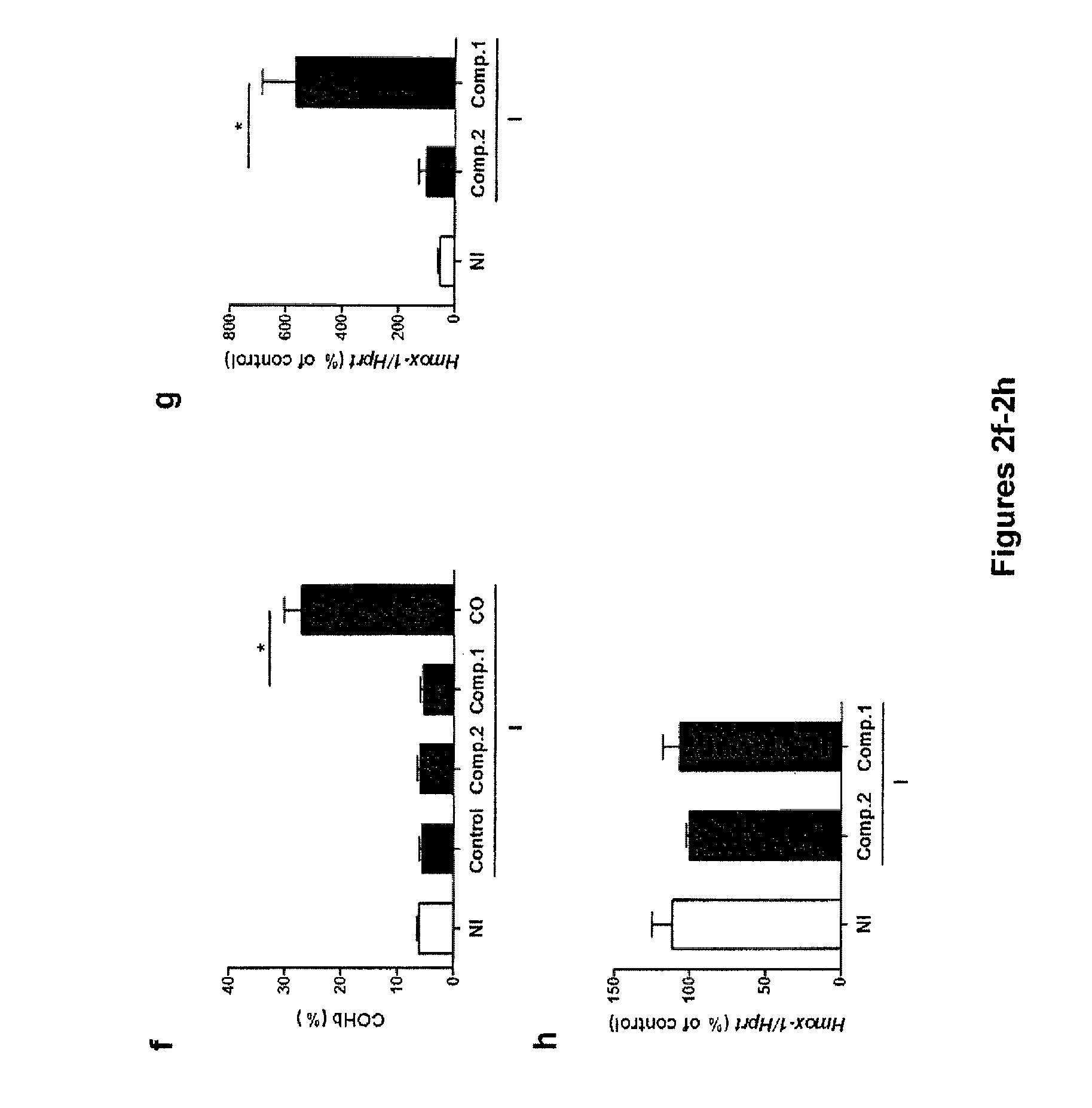Ruthenium carbon monoxide releasing molecules and uses thereof
a carbon monoxide and ruthenium technology, applied in the field of ruthenium carbon monoxide releasing molecules, can solve the problems of unacceptably high mortality rate of cerebral malaria (cm) and other forms of severe malaria, unacceptably high case-fatality rate of severe malaria treated with either artemisinin or quinine derivatives, and inability to meet the requirements of clinical use,
- Summary
- Abstract
- Description
- Claims
- Application Information
AI Technical Summary
Benefits of technology
Problems solved by technology
Method used
Image
Examples
example 1
CORM-2 Protects Against ECM Development
[0197]It has previously been shown that administration of CO by inhalation protects P. berghei ANKA infected C57BL / 6 mice from developing ECM (see, e.g., Pamplona et al. Nat Med (2007) 13:703-710). The inventors questioned whether CO-RMs could mimic the protection conferred by CO inhalation in P. berghei ANKA infection. To this end, a known ruthenium CORM, Ru(CO)3Cl2, also referred to herein as CORM-2, was tested on different schedules of treatment and doses in P. berghei ANKA infected C57BL / 6 mice (data not shown). As negative control, a CO-depleted analogue of CORM-2, [Ru(DMSO)4Cl2] (also referred to herein as “Compound 2”) where all CO ligands of Ru(II) are replaced by DMSO ligands (FIG. 1a) was used. Treatment twice daily with CORM-2 between days 2 and 3 after infection prevented death or symptoms of ECM in all infected C57BL / 6 mice (P30% infected red blood cells) and were sacrificed 3 weeks after infection (FIG. 1b,c). In contrast, mice in...
example 2
A Novel CO-Releasing Molecule (Compound 1) Protects Mice from ECM without COHb Formation
[0199]A novel water soluble CO-RM, tricarbonyldichloro(methylthiogalactopyranoside) Ru(II) [Ru(CO)3Cl2(Gal-S-Me)](Compound 1), was synthesized through the reaction of CORM-2 with methylthiogalactopyranoside (Gal-S-Me) (FIG. 2a). This Ru tricarbonyl complex features a galactose (Gal) derived ligand coordinated to the Ru centre via a thioether linkage. The presence of the galactose ligand may confer a certain degree of liver specificity.
[0200]Tricarbonyldichloro(methylthiogalactopyranoside) Ru(II) [Ru(CO)3Cl2(Gal-S-Me)], also referred to herein as Compound 1, was prepared by reacting CORM-2 with methylthiogalactopyranoside (Gal-S-Me) as described herein (see FIG. 2a and Materials and Methods section). The bio-distribution of Compound 1 in tissues was assessed by quantifying the levels of Ru and CO in the host by the method of Vreman et al., Anal Biochem (2005) 341:280-9. Liver, kidney, spleen, lung...
example 3
Compound 1 Induces the Expression of HO-1
[0206]It has been shown that HO-1 induction reduced CM incidence in P. berghei ANKA infected C57BL / 6 mice (see, e.g., Pamplona et al., Nat Med (2007) 13:703-710). Compound 1 distributes preferentially to the liver, which is considered a mediator of systemic and local innate immunity and has been implicated in the regulation of genes that contribute to the control of inflammation, such as HO-1 (see, e.g., Nemeth et al., Semin Immunopathol (2009) 31:333-343). No signs of ruthenium are found in the brain. The inventors questioned whether Compound 1 could modulate the expression of HO-1 and thus contribute to the observed protection against ECM. Expression of HO-1 mRNA was significantly up-regulated in the liver of P. berghei ANKA infected Compound 1-treated C57BL / 6 mice, 11.1±2.3 and 5.7±1.2 fold, when compared, respectively, to non-infected and infected Compound 2-treated mice (Pg). Moreover, the expression of HO-1 mRNA in the brain of infected...
PUM
| Property | Measurement | Unit |
|---|---|---|
| w/w | aaaaa | aaaaa |
| diameter | aaaaa | aaaaa |
| diameter | aaaaa | aaaaa |
Abstract
Description
Claims
Application Information
 Login to View More
Login to View More - R&D
- Intellectual Property
- Life Sciences
- Materials
- Tech Scout
- Unparalleled Data Quality
- Higher Quality Content
- 60% Fewer Hallucinations
Browse by: Latest US Patents, China's latest patents, Technical Efficacy Thesaurus, Application Domain, Technology Topic, Popular Technical Reports.
© 2025 PatSnap. All rights reserved.Legal|Privacy policy|Modern Slavery Act Transparency Statement|Sitemap|About US| Contact US: help@patsnap.com



